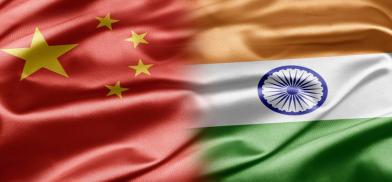China manages business as usual with India
Without complete disengagement in Ladakh, China is back as India’s topmost trading partner, writes Lt Gen Prakash Katoch for South Asia Monitor

The India-China disengagement in Eastern Ladakh has lost momentum after phase one on both banks of Pangong Lake under which India also vacated strategic heights like the Kailash Range which is the territory of India. China appears reluctant to disengage from other points while it continues to enjoy the strategic advantage of People's Liberation Army (PLA) lodgment in the Depsang Plains.
China would like to force buffer zones astride all friction points, as it has done on the north bank of Pangong Lake. This will mean Indian troops falling back more in their own territory.
China has been able to achieve the above not only because of better border infrastructure and communications on the Chinese side along the 3,488 km Line of Actual Control (LAC) but because India has been neglecting its military and building hard power. As a military scholar, who does not want to be identified, succinctly says, “True, the present administration is bucking up its military piecemeal on those heights (in Ladakh) to deal with the current situation. However, India keeps its military in balance with armed police while its sword arm is the bureaucracy.”
Latter is more than true because the defense secretary, not the defense minister, is charged with the defense of India. Resultantly, India still has not defined a national security strategy and suffered massive intelligence failures in Kargil during 1999 and in Ladakh last year.
A report by the US Department of Defence (DoD) to the Congress titled Military and Security Developments involving the PRC 2020 states that China conducts influence operations to achieve outcomes favorable to its strategic objectives by targeting cultural institutions, media organizations, business, academic, and policy communities.
China is aware that Indian polity is highly sensitive to happenings on the border that can affect periodic state-level elections and will obfuscate anything that could lose face. That is why China has the audacity to call India the aggressor in 2020 and with four state-level elections approaching, the Indian Defense Minister Rajnath Singh stated at an election rally in Tamil Nadu on February 21, "After nine rounds of military and diplomatic dialogue, the disengagement process is complete.”
There is a view that for the same reason, the Indian Prime Minister Narendra Modi sought an informal meeting with the Chinese President Xi Jinping in Wuhan just before the 2019 general elections in India; perceiving that activation of the border by China could affect elections.
China’s aggressive moves have caused nations in the region to hike their defense budgets in a big way, but India has not. On the other hand, China has just announced a 6.8 percent hike in its defense budget for 2020, which takes its 2021 defense budget to a mammoth $209 billion. The Indian polity appears sanguine about US support in case of a conflict with China. But the hard fact is that America and China may keep sparring without going to war, but US support to India will be by way of selling more arms and politico-diplomatic statements. America has not de-hyphenated Pakistan from India either and the Joe Biden administration is re-energizing military ties with Pakistan.
Without complete disengagement in Ladakh, China is back as India’s topmost trading partner. Media reports indicate that India is set to clear some 45 investment proposals from China. China’s Huawei has been awarded Rs. 300 crore contract to expand the network of Bharti Airtel. China has expressed support for India to host this year’s BRICS, as India has assumed the chairmanship of BRICS for 2021.
Spokesman of China’s foreign ministry told media in Beijing, “We support India hosting this year’s meeting and will work with it and other members to strengthen communication dialogue and consolidate the three-pillar cooperation, expand BRICS plus cooperation, and work for greater progress under BRICS and also help the world to defeat COVID-19, resume economic growth and improve global governance.” The Chinese president has attended all the annual BRICS - the acronym coined to associate five major emerging economies: Brazil, Russia, India, China, and South Africa - summits in the past. He will likely attend this year’s summit too provided he finds the level of business as usual with India to his satisfaction.
During the visit of Chinese Vice President Li Keqiang to India in 2013, PLA was lodged some 20 km deep in the Depsang Plains. The intrusion was finally withdrawn after three weeks, only when the then government acceded to China’s demand for dismantling structures and surveillance equipment at Chumar, 600 km south of the intrusion.
The situation may be the same during the visit of Xi if he comes for the forthcoming BRICS summit unless China agrees to complete disengagement from Ladakh.
Indian policymakers need to seriously review its defense strategy and rapidly build India’s combat potential.
(The author is an Indian Army veteran. The views are personal)









Post a Comment